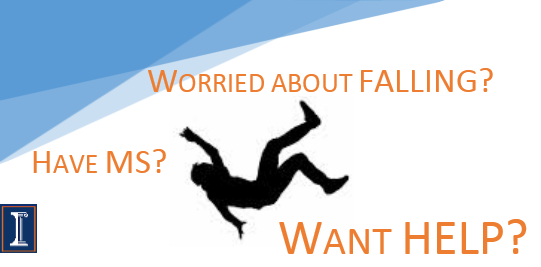EXCLUSIVE: Multiple Sclerosis, Falls and Home Exercise to be Studied at University of Illinois, Urbana Champaign
Written by |

Dr. Jacob Sosnoff wants to know more about falling — something that few multiple sclerosis (MS) researchers focus on, even though it is a daily threat for many people with the disease. Sosnoff, an Associate Professor in the Department of Kinesiology and Community Health at the University of Illinois, Urbana Champaign, told Multiple Sclerosis News Today in an exclusive interview: “falls are a big health concern of individuals with MS. Every other person with MS is going to fall in the next year.”
Although this is a substantial problem, there are only eight published studies focusing on the prevention of falls in MS. More work is needed.
 People with MS who are transitioning from using a cane — those with an EDSS (Expanded Disability Status Scale) score of between 4-6, according to Sosnoff — are at the most risk of falling. The EDSS is a way of measuring the severity of MS. This transitional disability stage is particularly risky because falls obviously create the chance for injury, which can range from bruising to a serious internal injury. The use of steroids in MS can also create a high risk of fractures, due to effects on bones, causing osteopenia and osteoporosis. According to some studies, individuals with MS are 4 times more likely to suffer a hip fracture.
People with MS who are transitioning from using a cane — those with an EDSS (Expanded Disability Status Scale) score of between 4-6, according to Sosnoff — are at the most risk of falling. The EDSS is a way of measuring the severity of MS. This transitional disability stage is particularly risky because falls obviously create the chance for injury, which can range from bruising to a serious internal injury. The use of steroids in MS can also create a high risk of fractures, due to effects on bones, causing osteopenia and osteoporosis. According to some studies, individuals with MS are 4 times more likely to suffer a hip fracture.
In addition to physical injury, the fear of falling may reduce the activities that a person with MS is willing to engage in, limiting physical activity. This is an important consideration since exercise and physical activity could help with increased mobility and might even delay disease progression.
Sosnoff noticed when he began work on falls in MS that much of the scientific literature focuses on healthy older adults and falls, but it was not clear that the findings could be applied to people with MS. Based on this, he and his colleagues have initiated studies to better understand the impact of exercise on falls. He noted “we have been looking at home-based exercise as a way to minimize falls.”
[adrotate group=”4″]
Home-based, self-directed exercise has the benefit of being less expensive than working in a gym or with a trainer. In Sosnoff’s studies, home-based exercise includes frequent check-ins with the researchers to make sure the exercises are being done correctly.
Sosnoff and his collaborators are now recruiting participants for two trials, both funded by the MS Society. One includes a study of home-based exercise versus education about falls (the control group) in older adults, from ages 50 and onward. The second study focuses on the risk of falling in people who spend 80% of their time or more in wheelchairs. After the studies have been completed, the control group will also be given the option of participating in an exercise program.
The researchers will measure falls wherein participants will keep track of their own falling incidents using a diary, while also tracking walking, balance and cognition. Impaired cognitive function is known to increase the risk of falls.
People who are interested in participating in one of the studies can contact Jen Wajda at 217-300-1696 or they can write to [email protected]. Travel may be paid for.
Another good source for information is the International MS Fall Prevention Research Network, which is an organization established by Sosnoff to increase collaboration between falls researchers.
This work will hopefully identify ways of preventing falls in people with MS, increasing their health and quality of life.





